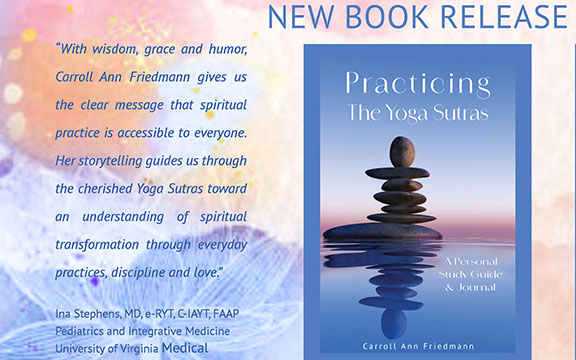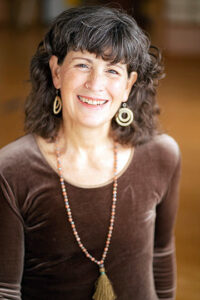
iStock
Integral Yoga® Publications is pleased to announce this new release: Practicing the Yoga Sutras: A Personal Study Guide & Journal by Carroll Ann (Prashanti) Friedmann. The book, which utilizes the sutra translations and definitions from The Yoga Sutras of Patanjali: Translation and Commentary by Sri Swami Satchidananda, is its perfect companion study guide and journal. It may also be used fruitfully in Yoga teacher training, helping students and teachers connect to each other and to Yoga philosophy. Study guides for groups are included. Readers may also learn to chant each sutra using additional material found on the book’s website.
For eons, people have suffered from an inability to maintain a steady and peaceful mind. The Yoga Sutras of Patanjali offers a practical way to address this challenge. The practice of Yoga, and the Yoga Sutras, directly address the pain of existence, its causes, and its remedy. If our life feels just fine as-is then we are unlikely to take on a serious practice of Yoga. For almost all of us, some experience of suffering, discontent, restlessness, confusion, or a desire for a better and more satisfying life has led us to a Yoga practice. Serious Yoga practitioners still may experience pain and suffering, but they have decided to try to understand the cause of suffering and to actively search for a remedy in Yoga.
Why do human beings suffer? We may believe that there is something fundamentally wrong with us; that we carry a sinful or broken nature. We may also believe that our problems are caused by other people and their wrong actions or attitudes. Perhaps we understand suffering as the result of unsatisfactory conditions in our lives. What do you believe causes your unhappiness, restlessness, sadness, discontent, irritability, or other challenging emotions?
In the Yoga tradition of Patanjali, the cause of suffering is precise. We suffer because of the condition of our mind. In Sanskrit, the mind is called chitta. The power of the mind over the human experience is such that it shapes most of our reality. To understand this, we must first assume that basic human needs for food, shelter, and safety have been met. If so, Yoga philosophy explains that the source of our unhappiness is inside us. Our minds are filters that color our experience of everyone and everything—as such, they make up our reality.
For this reason, Patanjali’s description of suffering and his remedy centers in the chitta. Yoga is a science of the mind—a set of mental, physical, and spiritual practices designed to clean up and stabilizes the mind, bringing it into a state of clarity. The undisturbed mind is liberated from suffering.
As a set of practices, no religious system is necessary in Yoga. In fact, it can be better to come to it without strong beliefs to prejudice us against its methods. In Yoga, faith comes only as a result of experience. We come to believe that the practices of Yoga work to relieve our suffering because it is happening to us!
 Practicing the Yoga Sutras is in the space between commentary and self-help guide. It contains within it the possibility of a journal. If the reader chooses to make use of the “writing bubbles” that appear after the reflection questions—whether by drawing, doodling, making notes, writing poetry, and the like—then this will become a very unique book. It is not meant to be shared with others, but to be a place for private thoughts and self-study notes. I hope that it may also be used fruitfully in Yoga teacher training, helping students and teachers connect to each other and to Yoga philosophy.
Practicing the Yoga Sutras is in the space between commentary and self-help guide. It contains within it the possibility of a journal. If the reader chooses to make use of the “writing bubbles” that appear after the reflection questions—whether by drawing, doodling, making notes, writing poetry, and the like—then this will become a very unique book. It is not meant to be shared with others, but to be a place for private thoughts and self-study notes. I hope that it may also be used fruitfully in Yoga teacher training, helping students and teachers connect to each other and to Yoga philosophy.
I have avoided a conversation about different philosophical schools and interpretive arguments centered around this text. I am aware of these evaluations and arguments, but did not find them to be fruitful for my purpose. Thus, you will be certain to find other interpretations of these sutras than the ones that I have offered. I don’t think that this is a cause for concern. Yoga suggests that we develop belief based on our own experience. I hope that a real encounter with the Yoga Sutras will supersede debate and override confusion.
This is meant to be a personal book. Please make it your own.
About the Author:

Photo by Laura Dillon Rogers
Carroll Ann (Prashanti) Friedmann, BA, MDiv, E-RYT500 was educated at Vanderbilt University, Princeton Theological Seminary, and the University of Virginia. From 2007 to 2012, she received Yoga training at the Integral Yoga Academy at Satchidananda Ashram–Yogaville (Buckingham, Virginia). From 2013 to present she has studied at the K. Pattabhi Jois Ashtanga Yoga Institute with Saraswathi Jois and the Anantha Research Foundation with Dr. M. A. Jayashree and Sri M. A. Narasimhan in Mysore, Karnataka, India. She currently studies and practices Yoga under the guidance of Richard Freeman, Mary Taylor, Ty Landrum, and other classical teachers. She and her husband, Liam Buckley, are devotees of Sri Swami Satchidananda. They have four adult children and live in Charlottesville, Virginia, where they own and direct Ashtanga Yoga Charlottesville and the Ivy Yoga School. They teach asana, pranayama, meditation, chanting, philosophy, and hold an annual Yoga teacher training.

